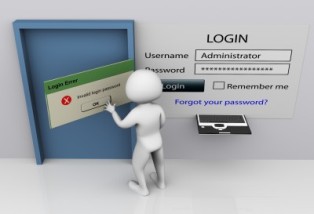Software security assurance is a procedure that helps design and implements software that saves from harm the data and resources contained in and controlled by that software. Software is itself a resource and thus must be afforded suitable security.
What is software security assurance?
Software Security Assurance (SSA) is the procedure of ensuring that software is designed to work at a level of sanctuary that is consistent with the possible harm that could result from the loss, imprecision, modification, unavailability, or misuse of the data and resources that it uses, controls, and protects.
The software security assurance process starts by identifying and categorizing the information that is to be restricted in, or used by, the software. The information should be classified according to its sensitivity. For example, in the lowly category, the crash of a security violation is minimal (i.e. the collision on the software owner's duty, functions, or status is insignificant). For a top category, however, the collision may pose a hazard to human life; may have an irreversible impact on software owner's missions, functions, image, or reputation; or may result in the loss of important assets or resources.

Once the information is classified, security requirements can be developed. The security supplies should address access control, counting network access and physical access; data management and data access; environmental reins (power, air conditioning, etc.) and off-line storage; human resource security; and audit follows and usage records.
Significance of Software Security Assurance
• Development security innovations. Some software has a extended custom of security innovations. Today this inheritance continues with these software market leading database security and individuality management solutions.
• Dropping the incidence of security fault in security products. These Software Security Assurance key programs include Oracle's Secure Coding Standards, mandatory security training for development, the farming of security leaders within development groups, and the use of mechanical analysis and testing tools.
• Reducing the collision of security weaknesses in unrestricted products on customers. These software has adopted clear security vulnerability disclosure and remediation policies. The company is committed to luxury ALL customers equally, and delivering the best possible safety patching experience through the Critical Patch Update and Security Alert programs.

"Comprehensive software security occupies a mixture of people, processes, and technologies, and it almost always occupies some modify to the way the organization operates. As software security approaches of age, using a maturity model will only help out to hasten your enterprise security initiative."
What are the boundaries?
The first thing we must do is understand that our systems (especially our software systems) do not have a boundary. This is a enormous problem for network security approaches, because they all basically rely on guarding a border. If you can’t tell within from exterior, you are in deep problem indeed when you’re trying to stop packets going in either way. And with the arrival of the cloud, well, all bets are off for drawing lines in the smooth around our stuff.
Some Advises related to security
Companies are not the only ones precious by software vulnerabilities. Last year, an audit group came under flames in the largest individuality theft case to date, in which approximately 40 million American Express, MasterCard, and VISA customers had their individual information concessioner. The credit card processing company from which the in sequence was stolen, Card Systems confirmed before the U.S. Congress in June 2005 that blame should drop on safety auditors who rudely certified the processing systems as compliant with accepted VISA standards. Unluckily, research data proves software vulnerabilities will persist to plague organizations in the future. According to a December 2005 report by IT research firm Gartner, 80 percent of companies are likely to suffer an application security incident by 2009.
As demonstrate here, susceptible software obviously poses serious risks to successful business operations. As a result, it is necessary for internal auditors to decide whether existing controls efficiently identify and address defects that could leave serious systems open to attacks and recommend that organizations include established best practices as part of their software security hard works.
The four components of effectual governance and software management risk that should be review in all information systems are:

•Risk appraisals. These are compulsory to determine the level of vulnerabilities in all significant systems and estimation the chance of losses that would be incurred from successful attacks.
•Susceptibility management. Managing fears allows auditors to identify exact security vulnerabilities that initiate risk, while allowing companies to take suitable action to eradicate or address that risk.
•Security equivalence for development and deployment. This allows companies to avoid the introduction of security vulnerabilities into dangerous systems. In other words, as programmers write code, they should create sure the code is protected by using security evaluation tools and techniques to prevent, notice, and correct the introduction of vulnerabilities within the code.
•Estimations tools. The utilization of effective security assessment tools and techniques within the association enables auditors to provide ongoing reviews and monitoring of risk levels so they can stay within an acceptable, quantifiable threshold.